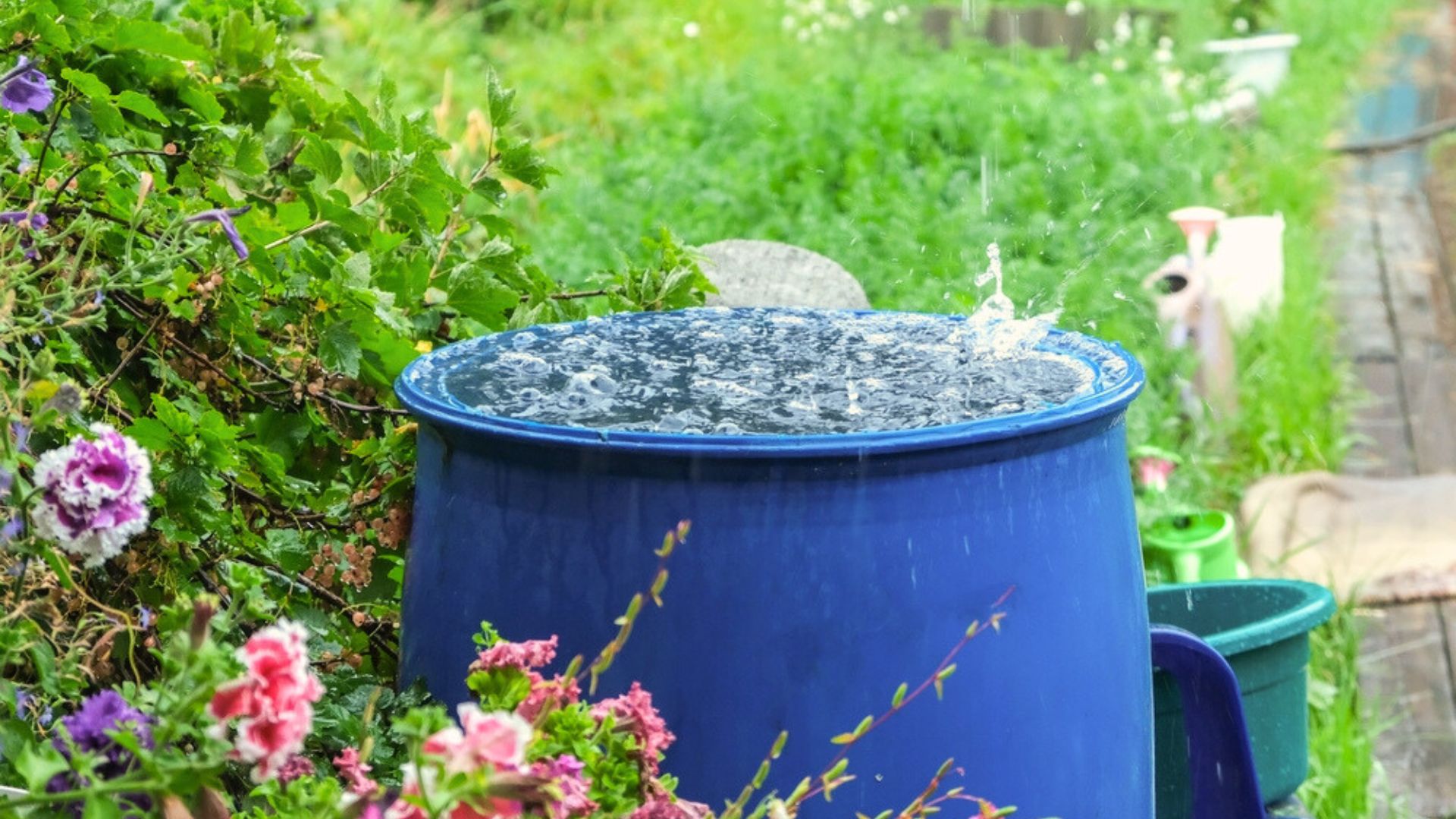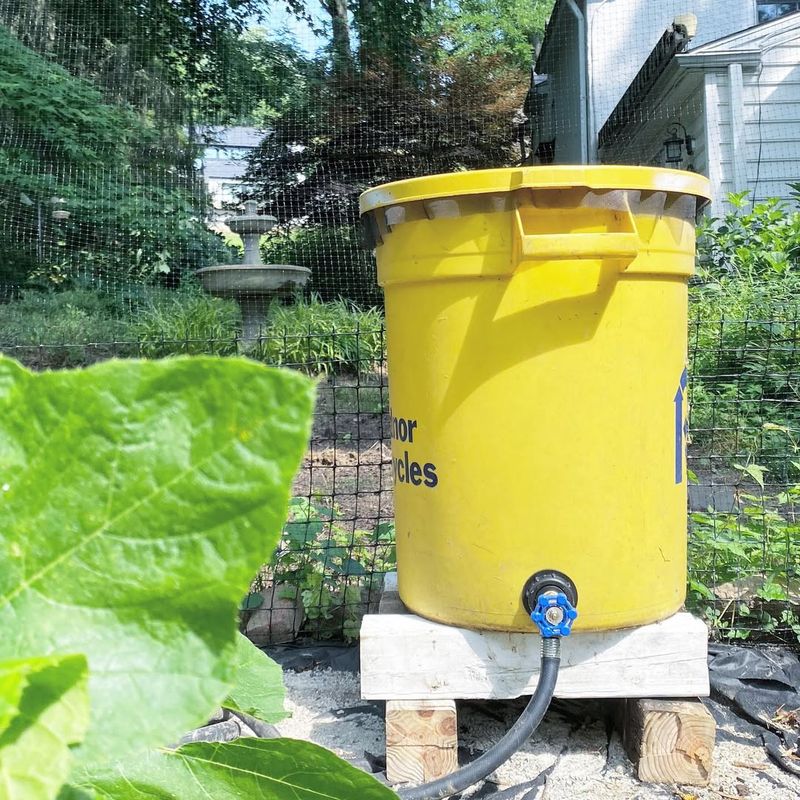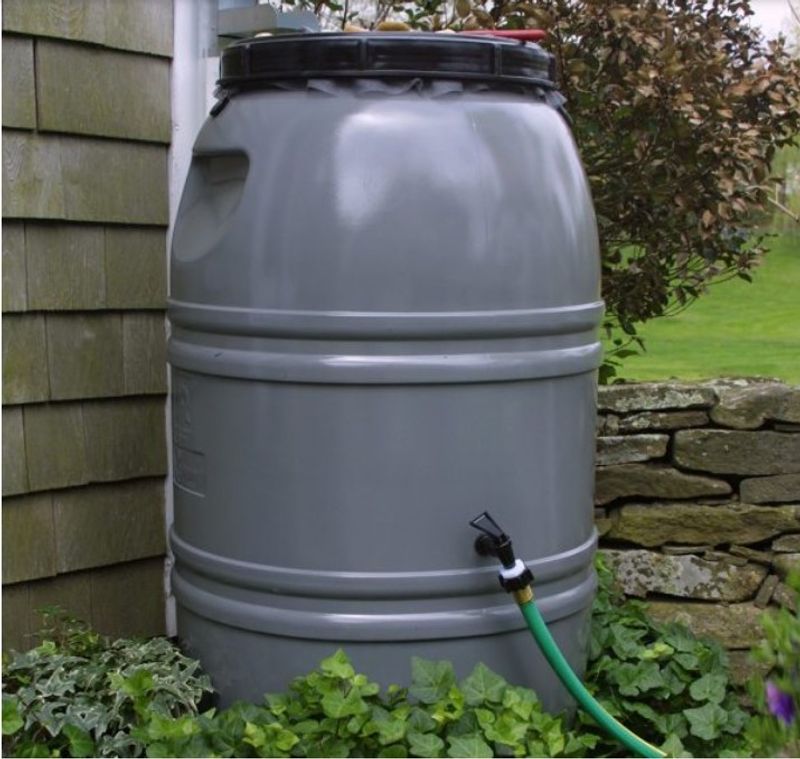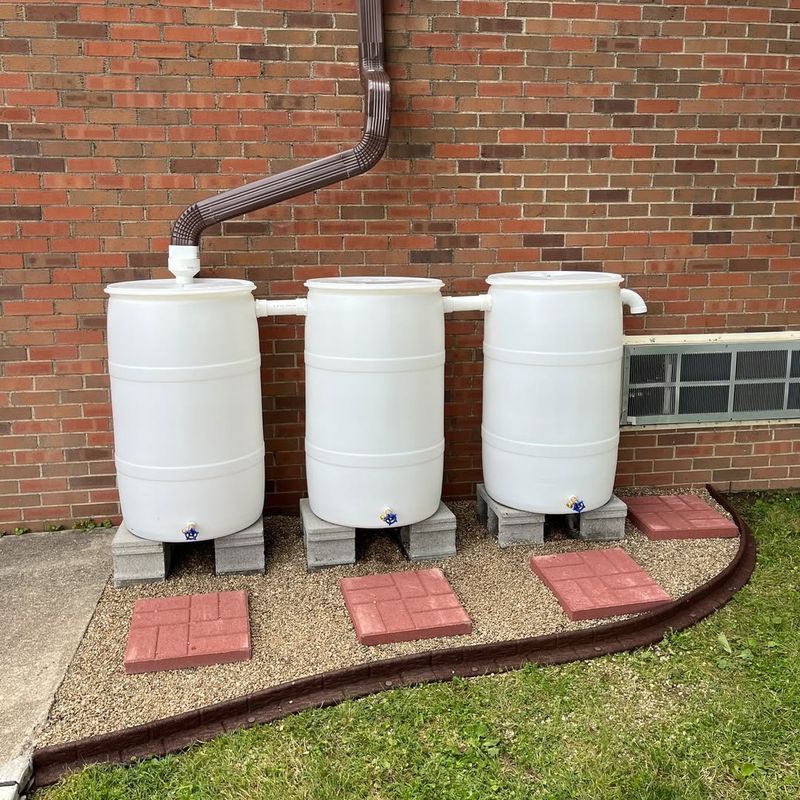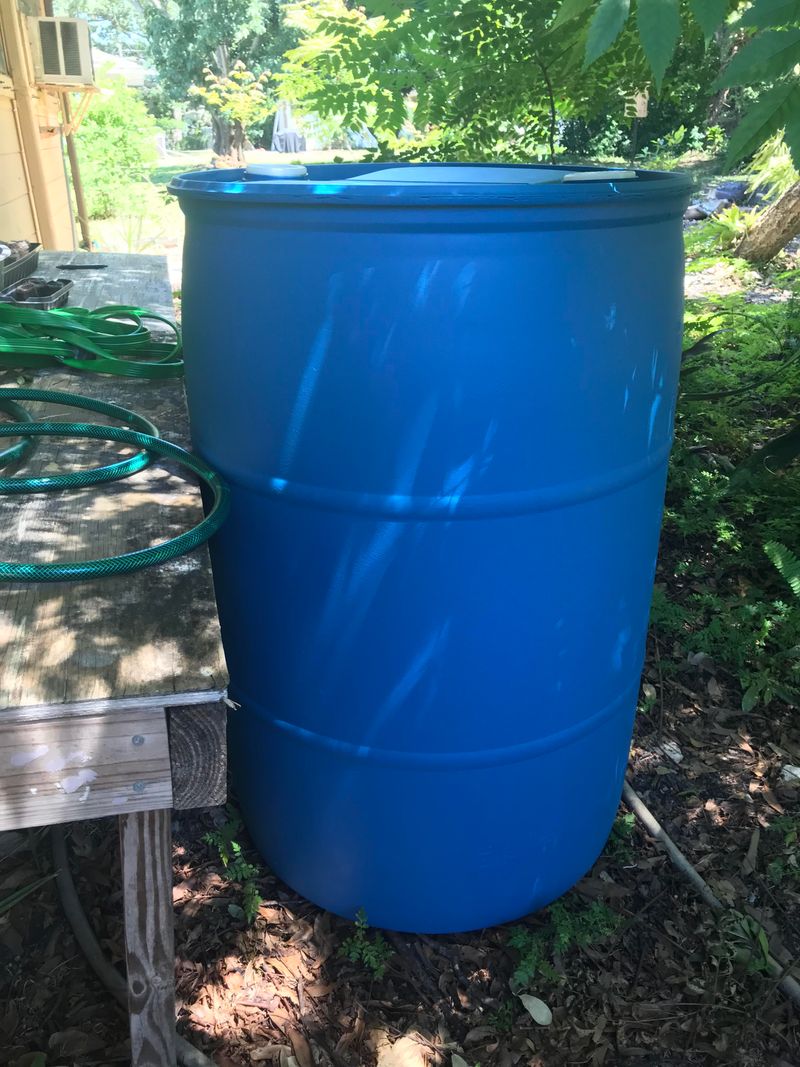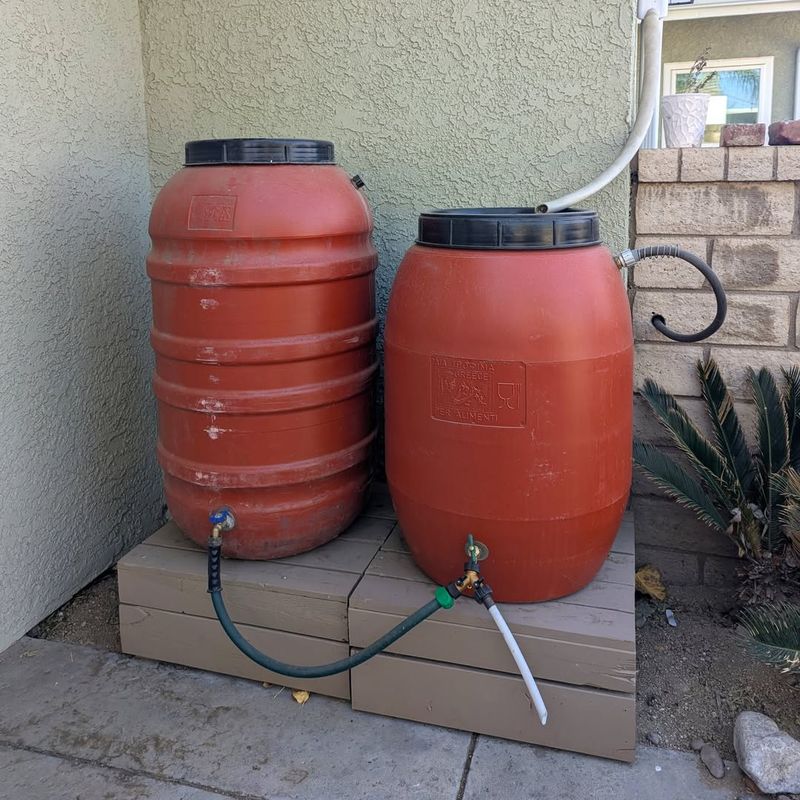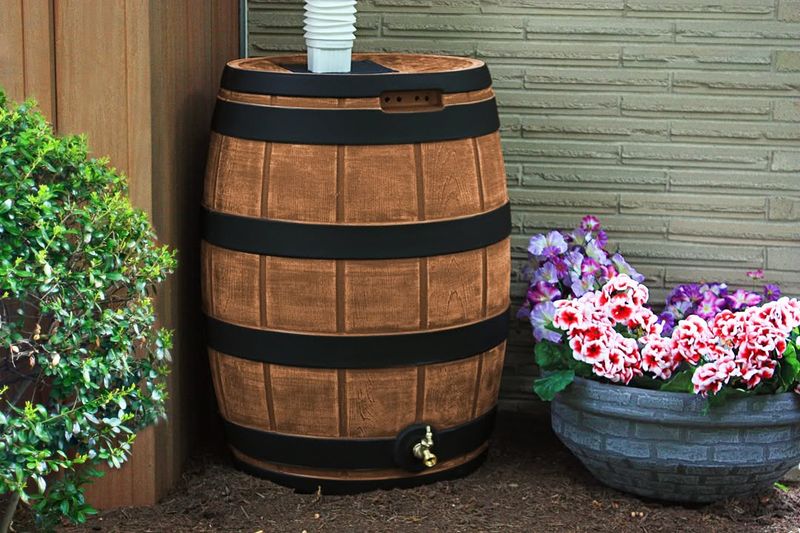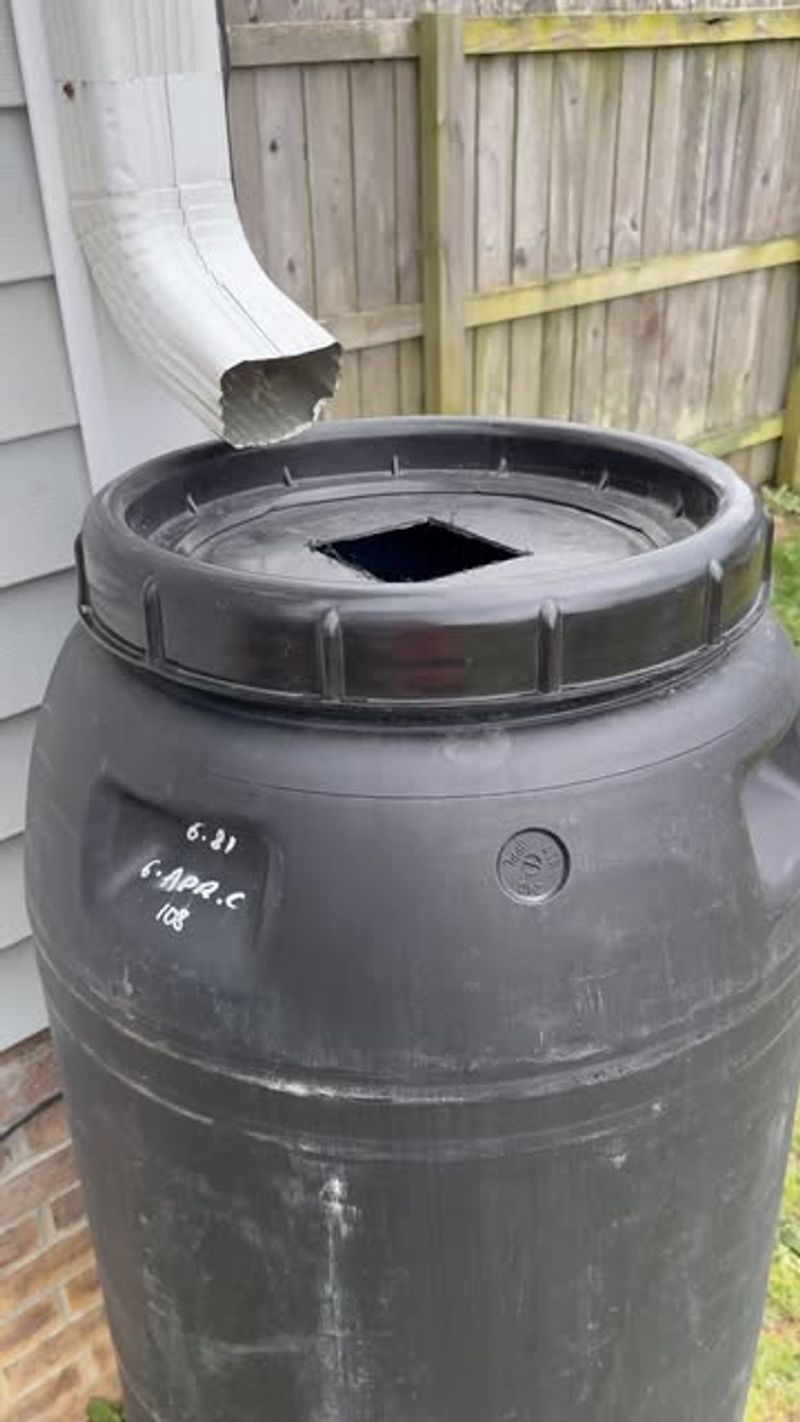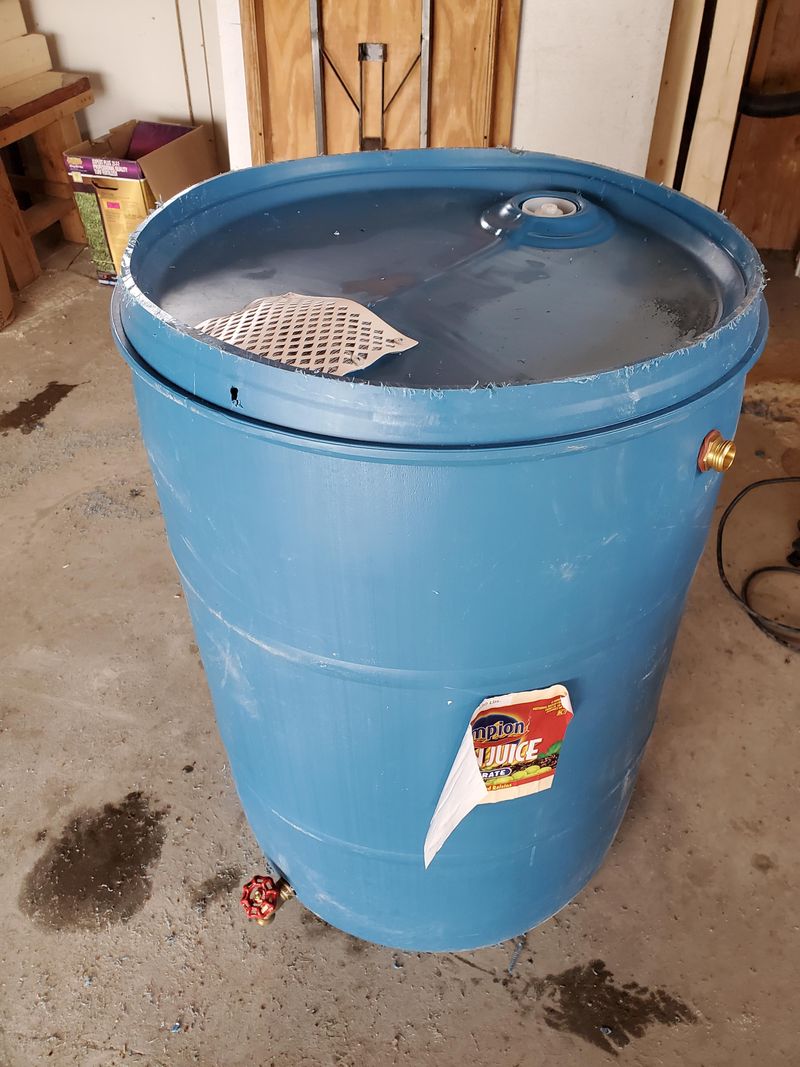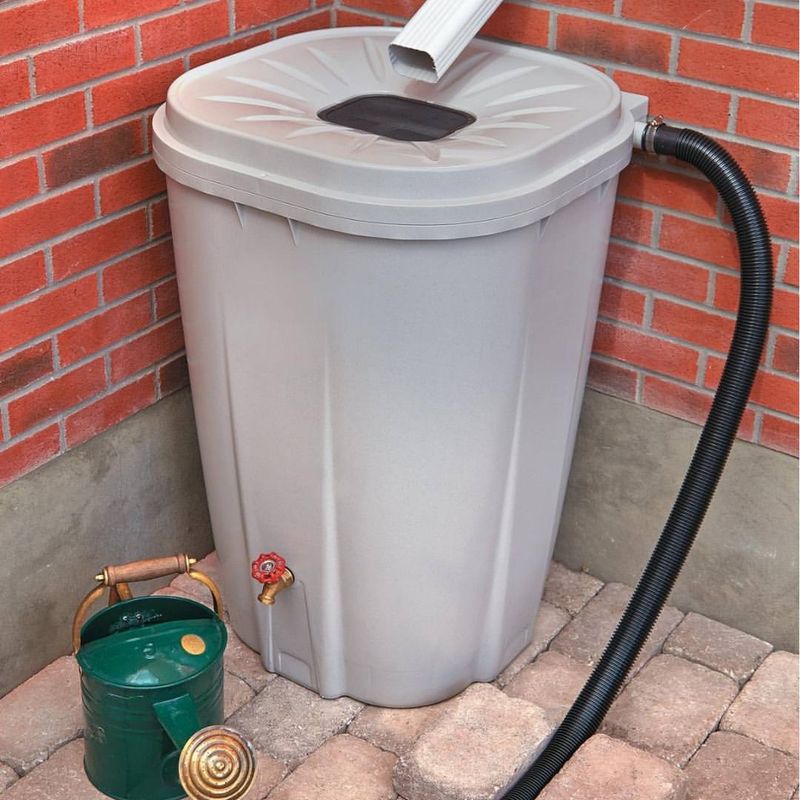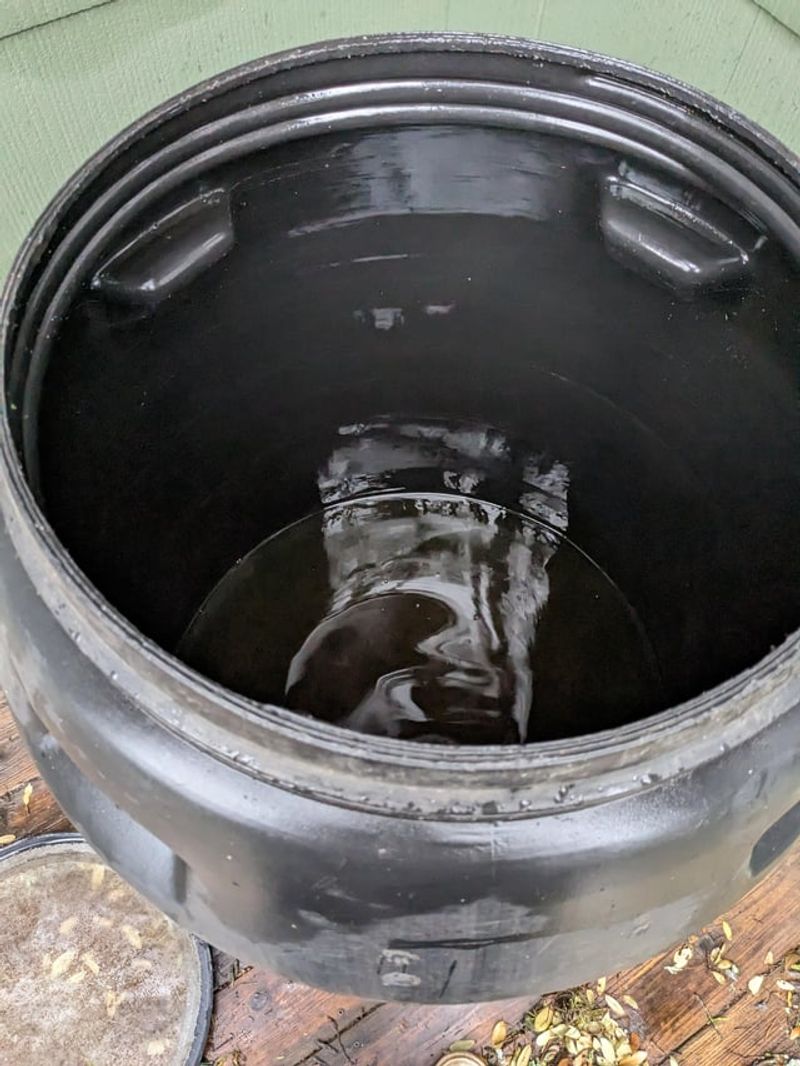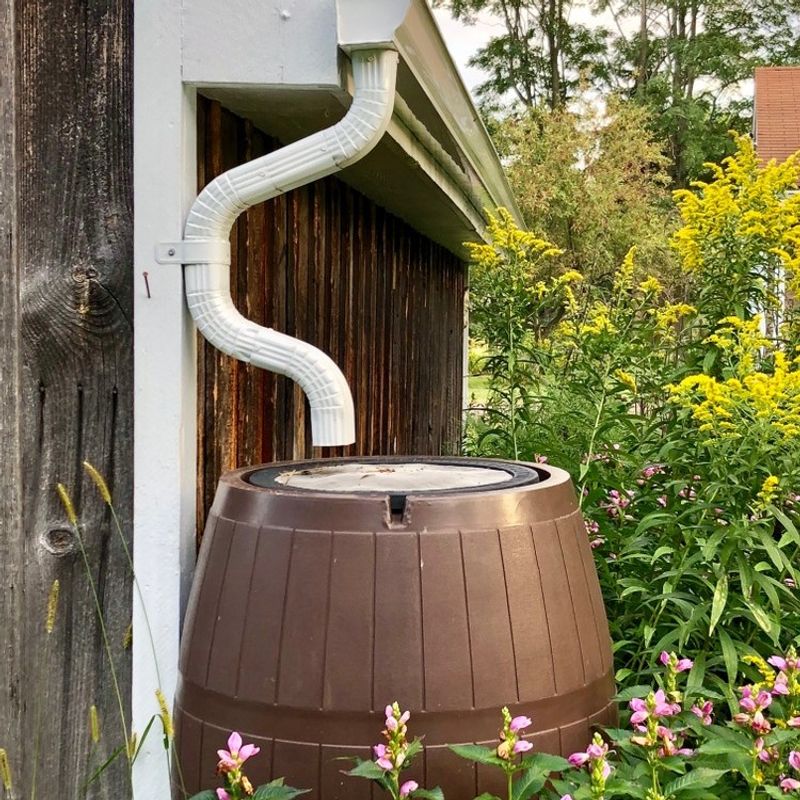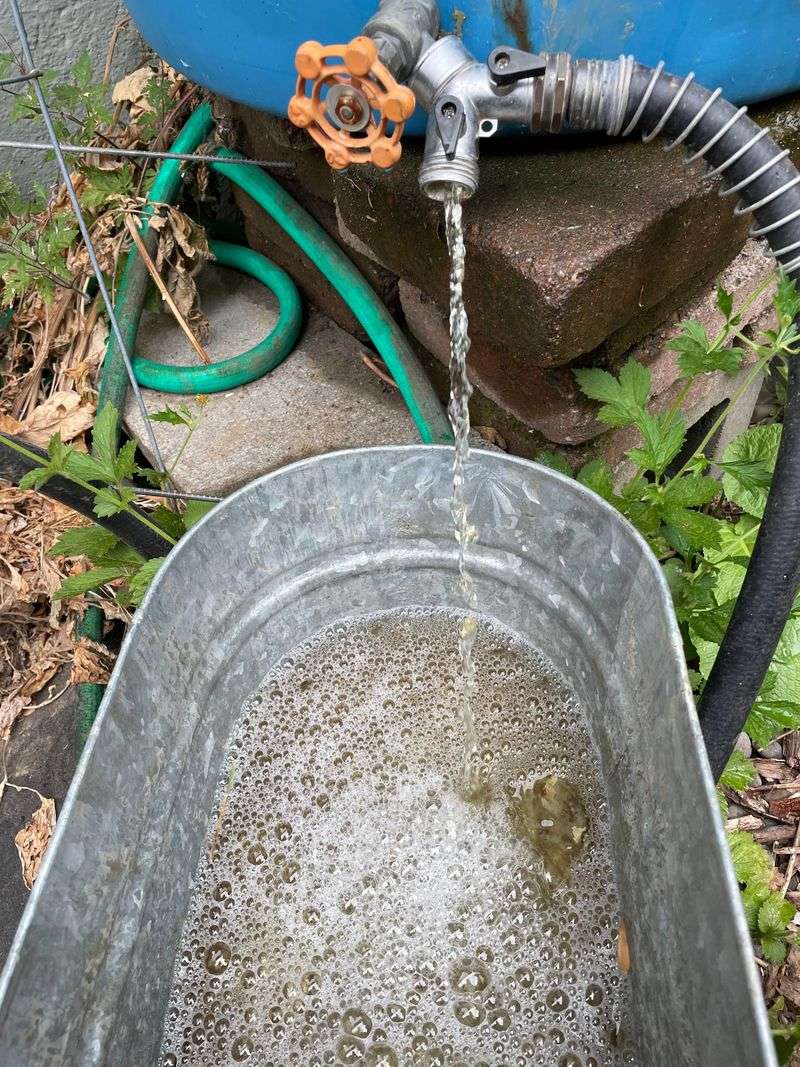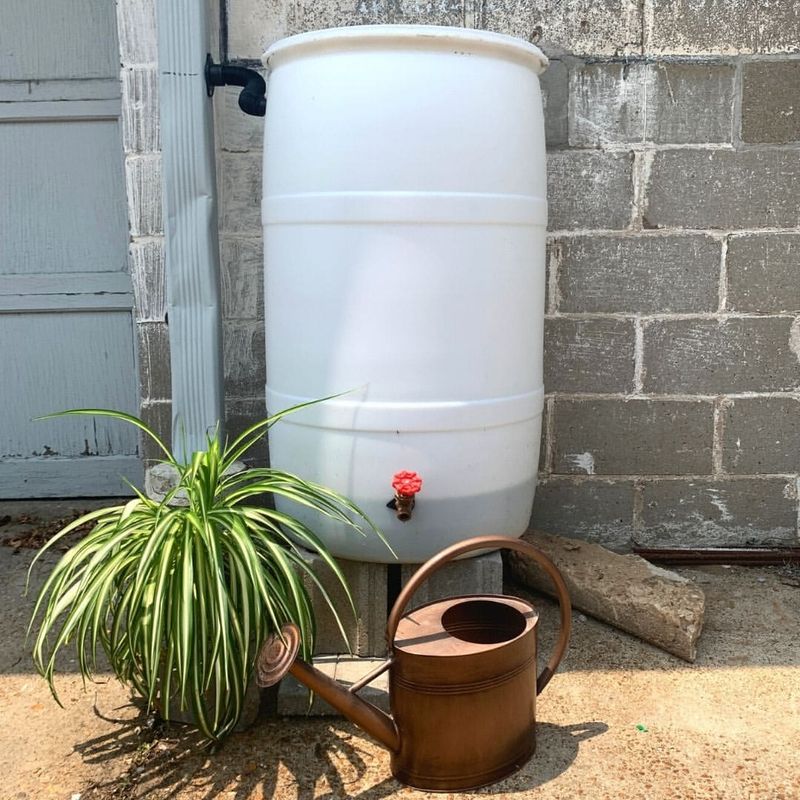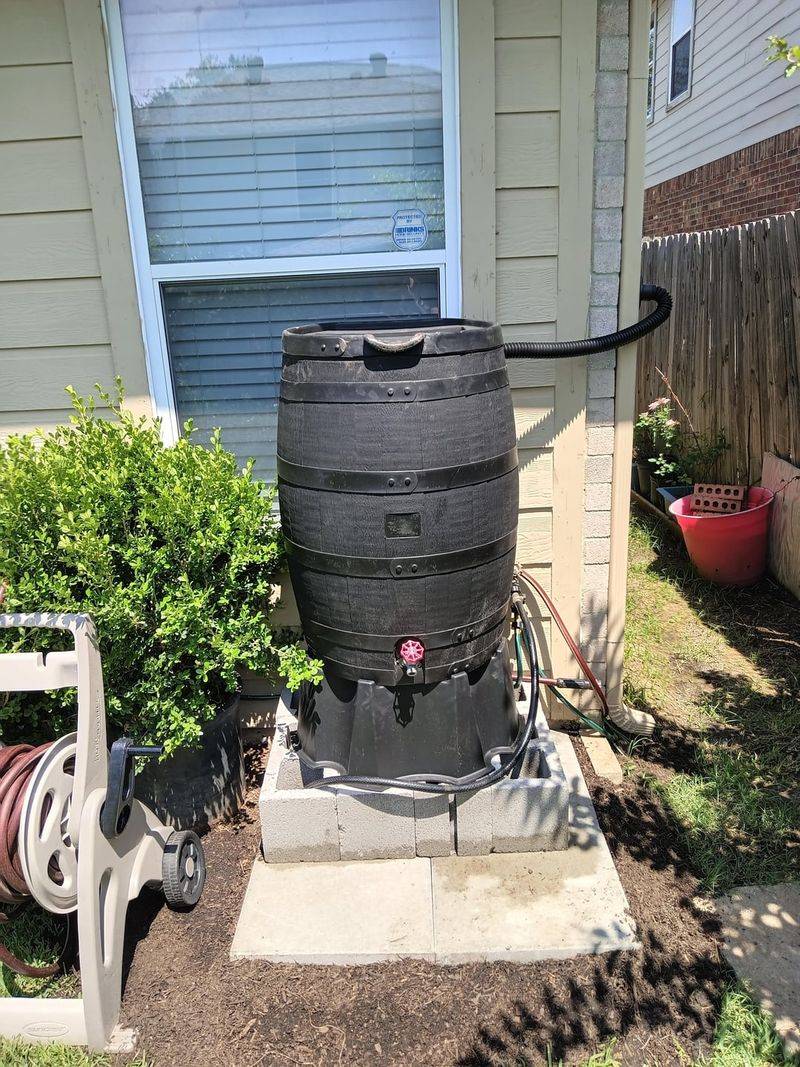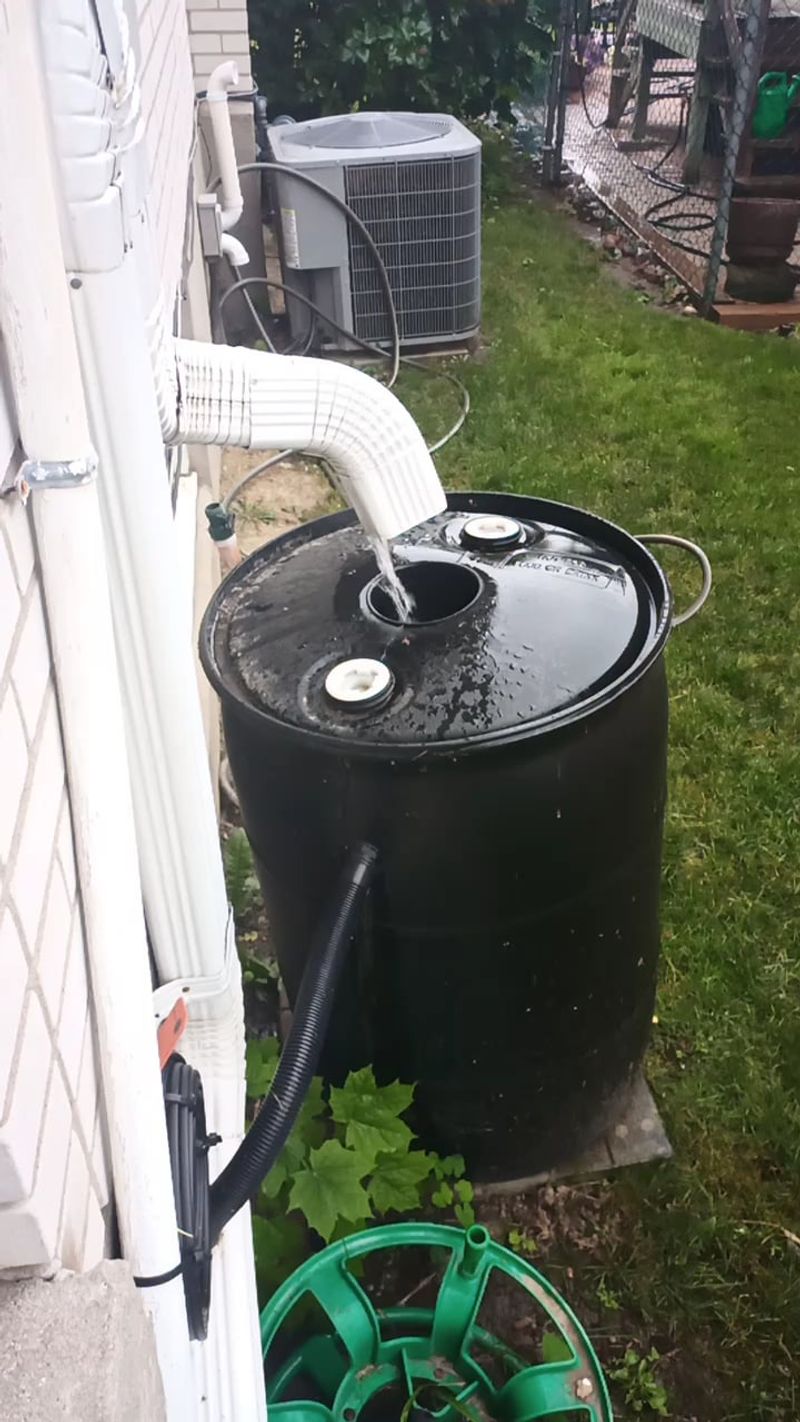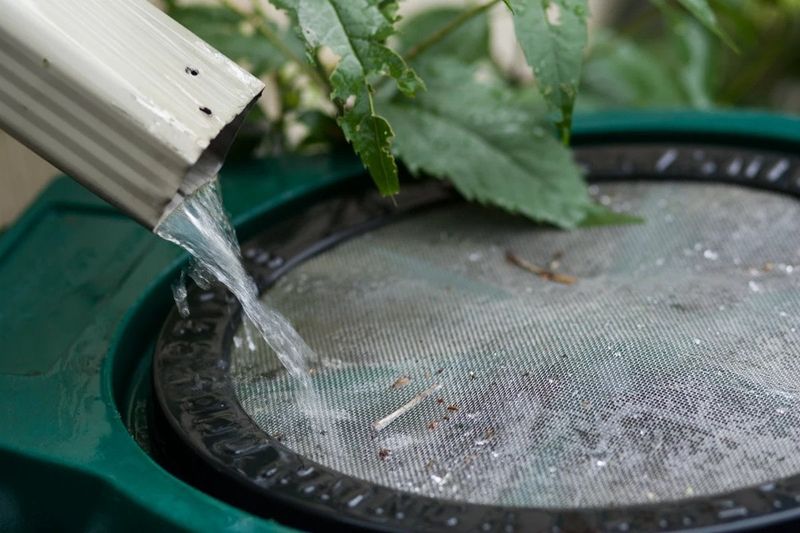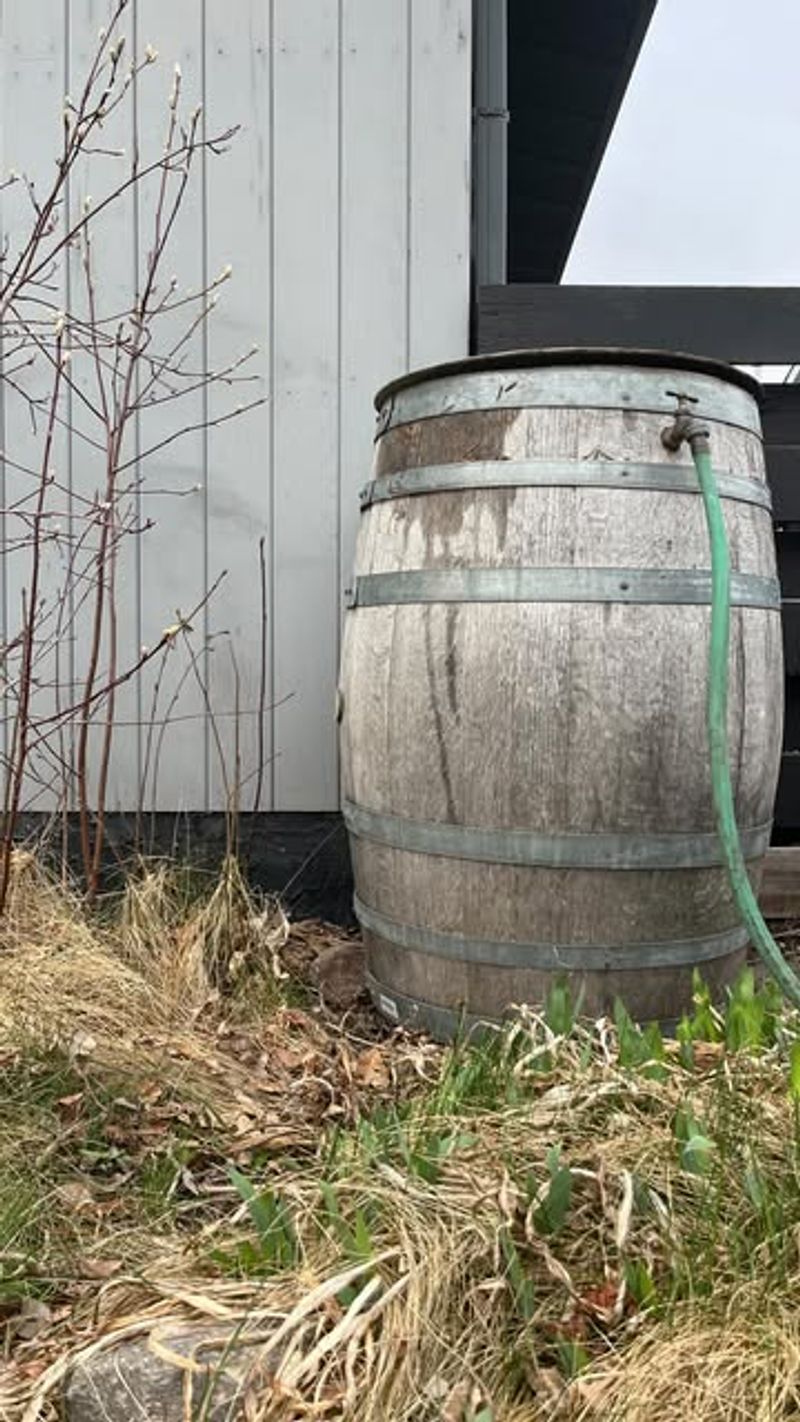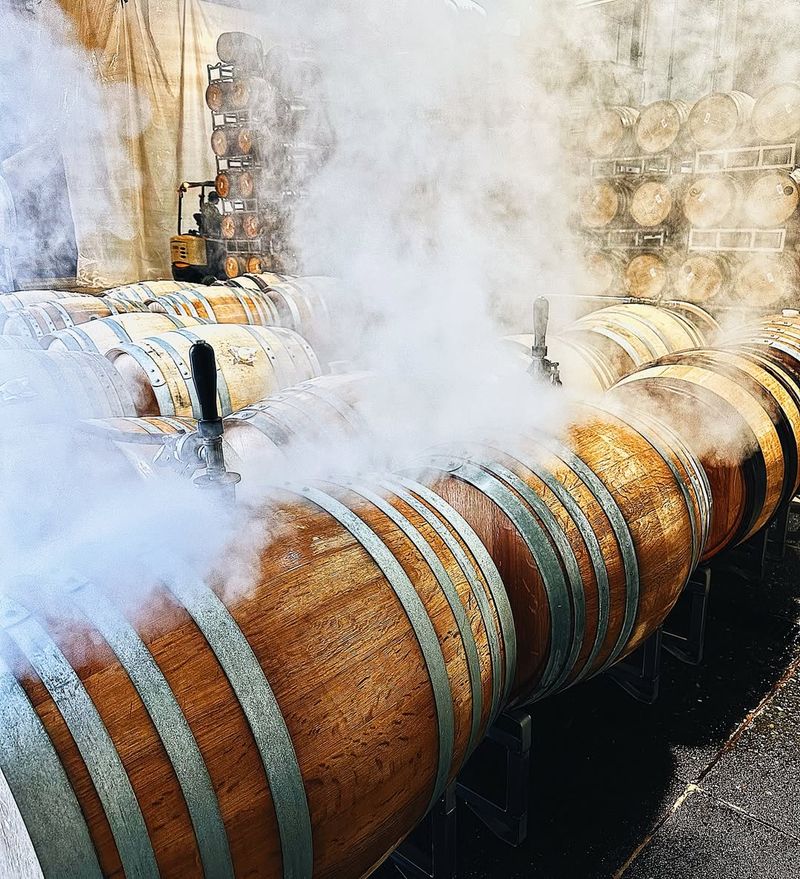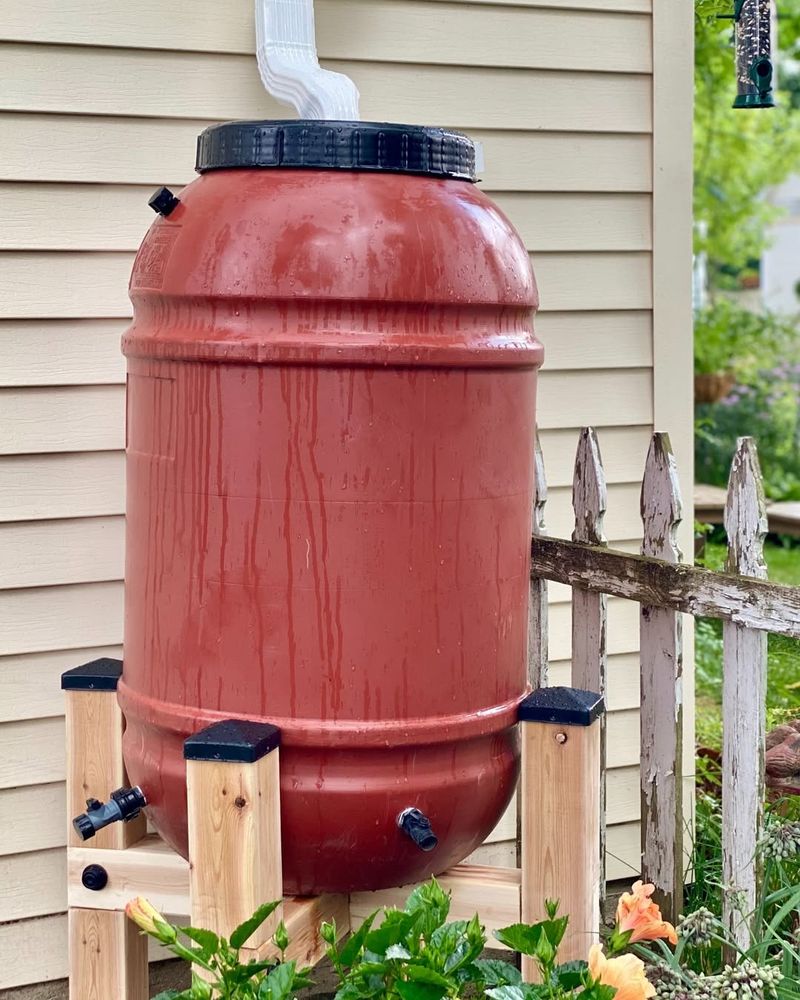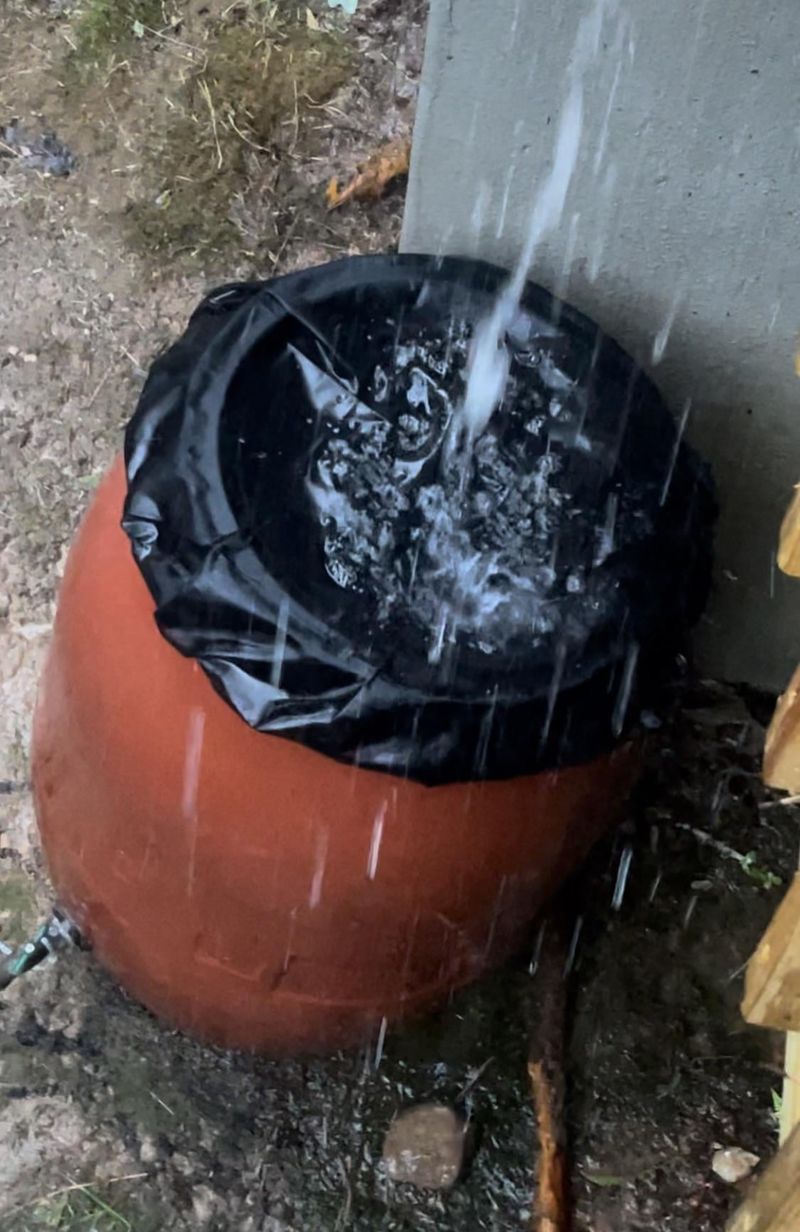Rain barrels sound simple—set one up, collect water, and enjoy the savings, right? Not so fast. A few small mistakes can turn your eco-friendly setup into a soggy mess. If your rain barrel smells funky, overflows, or attracts every mosquito in the neighborhood, you’re not alone.
The good news? These problems are totally avoidable. Here are 24 mistakes that could be sabotaging your rain barrel and how to fix them before things get gross.
1. Poor Placement
Right location is key, just like in real estate! Putting your rain barrel directly under a roof without gutters won’t work wonders. A rain barrel needs a proper setup with guttering to collect water efficiently. Place it in a shaded area to prevent algae growth.
Direct sunlight heats up the water, encouraging algae and bacteria. Plus, nobody wants a hot water garden. Make sure it’s on a level surface to avoid tipping. Consider proximity to the plants you’ll water to save effort.
2. Ignoring Overflow
Neglecting overflow can turn your peaceful garden into a swamp. An overflowing barrel can damage your foundation or flood your basement. Always install an overflow hose and direct it away from structures and gardens.
It’s essential to remember that rain doesn’t fall on command; storms can fill your barrel faster than you think. Regularly check for blockages in the system to keep water flowing freely. A well-managed overflow ensures your garden remains a sanctuary, not a marshland.
3. Ineffective Screening
Screening is like a security guard for your rain barrel. Without it, debris and bugs can crash the party. Ensure the lid fits snugly and has a fine mesh to block unwanted guests like mosquitoes. Replacing screens regularly keeps the water clean and usable.
A vigilant approach to screening prevents contaminants from making your rain barrel a breeding ground. Stay ahead of the game by checking the condition of your screens after every storm. Your plants will thank you!
4. Neglecting Winterization
Ignoring winter’s chilly embrace could spell disaster. If you leave your rain barrel full during freezing temperatures, expect cracks and damage. Drain and disconnect it before the first freeze. Store it upside down or sheltered to prevent ice formation inside.
Covering with a tarp can also offer protection. Proper winterization extends your rain barrel’s life, saving you from costly replacements. Embrace the seasons, but don’t let them ruin your rainwater collection efforts.
5. Misjudging Capacity Needs
Think of capacity like your appetite; underestimating it leads to overspill. Using a small rain barrel for a large roof area won’t cut it. Calculate the catchment area and choose a barrel that matches your needs. Too small, and you’ll lose precious water in heavy rains.
Consider adding multiple barrels connected in series for larger collection. This ensures you make the most out of every downpour and have enough water for dry spells. Bigger isn’t always better, but it’s often smarter!
6. Failing to Secure
Security isn’t just for your home; your rain barrel needs it too. An unsecured barrel can tip, causing spills or injury. Elevate it on a stable, level platform for easy access and stability. Use sturdy materials like bricks or cinder blocks, not wobbly wood.
Properly securing your barrel prevents accidents and ensures your water stays where it belongs. It’s a small step that makes a big difference in safety and efficiency.
7. Overlooking Maintenance
Rain barrels need TLC too. Neglecting maintenance leads to algae growth and debris buildup, which can clog your system. Regularly clean the interior and ensure filters and screens are clear. Spend time inspecting the barrel for leaks and repairing as needed.
A little maintenance goes a long way in preserving your water quality and extending the life of your barrel. It’s not just about collecting water; it’s about keeping it usable and clean.
8. Using Harmful Materials
Material choice matters. Using non-food-grade plastics may leach harmful chemicals into your water. Always opt for food-safe barrels to ensure the water remains safe for plants. Recycled barrels are eco-friendly but check their previous use—no oil drums, please!
Quality materials impact the water’s purity and your garden’s health. Remember, what goes into your rain barrel ends up on your plants, so choose wisely.
9. Ignoring Mosquito Prevention
Nobody likes uninvited guests, especially mosquitoes. Failing to prevent mosquitoes turns your rain barrel into their favorite hangout. Cover openings with fine mesh, and consider larvicide tablets if needed.
Mosquitoes are a nuisance, and their presence can lead to health risks like West Nile Virus. Taking preventive measures ensures your rain barrel remains a beneficial tool, not a breeding ground for pests. Keep your garden and yourself safe by addressing this issue head-on.
10. Inadequate Filtration
Filtration isn’t just a fancy word; it’s a necessity. A clogged filter can halt water flow and reduce efficiency. Regularly clean or replace filters to maintain performance.
Without adequate filtration, debris can contaminate your water supply, affecting its usability. A good filtration system keeps unwanted particles at bay and prolongs the life of your rain barrel. Your plants will love you for the extra effort.
11. Over-reliance on One Barrel
Putting all your eggs in one basket applies to rain barrels too. Relying on a single barrel limits your collection capacity. Connect multiple barrels to increase storage and ensure you have enough water during dry periods.
Diversifying your barrels helps manage overflow and provides backup in case one fails. It’s a strategy that maximizes water collection and minimizes risk. Consider it an investment in your garden’s future.
12. Ignoring Local Regulations
Playing by the rules is essential. Some areas have regulations on rainwater collection. Ignoring them could lead to fines or having to dismantle your system. Check with local authorities before installation to ensure compliance.
Knowing the rules helps avoid legal troubles and ensures your rainwater harvesting efforts are rewarded, not punished. It’s about being a responsible and informed gardener.
13. Improper Hose Attachment
A loose hose connection can be a pesky problem. Improper attachment leads to leaks, reducing water availability for your garden. Ensure hoses are tightly secured and fitted with proper seals.
Regularly check connections for wear and tear, as small leaks can add up over time. A secure connection means more water for your plants and less wasted on the ground. Keep your system efficient with regular inspections.
14. Underestimating Water Weight
Water is heavy, and underestimating its weight can lead to disaster. Ensure your stand is strong enough to support a full barrel without buckling. Use sturdy materials like concrete or solid wood. Avoid placing it on soft ground, which can sink or tilt under pressure.
The weight of water is no joke, and preparing for it prevents accidents and ensures your rainwater system functions smoothly. Plan ahead to avoid unnecessary headaches.
15. Neglecting Roof Maintenance
Your rain barrel is only as clean as the roof feeding it. Neglecting roof maintenance introduces contaminants into your water. Regularly clean and repair your roof and gutters.
Leaves, bird droppings, and debris can end up in your rain barrel if left unchecked. A well-maintained roof ensures the water remains clear and suitable for garden use. It’s not just about the barrel; it’s about the whole system.
16. No First Flush Diverter
The first rain washes contaminants off the roof into your barrel. A first flush diverter redirects this initial flow, keeping your water clean. Install one to improve water quality.
Regularly inspect and maintain the diverter to ensure it functions properly. It’s a simple addition that makes a big difference in water purity. Your plants will appreciate the clean water, free from roof runoff debris.
17. Overloading Gutters
Clogged gutters are a rain barrel’s worst enemy. Overloading them reduces water flow and leads to overflow. Regularly clean and maintain gutters to prevent blockages.
Consider installing gutter guards to minimize debris entry. Clean gutters ensure efficient water collection and prevent damage to your rainwater system. It’s a small task that pays big dividends in performance.
18. Choosing Wrong Barrel Size
Size matters in the world of rain barrels. Choosing one too small for your roof’s catchment area limits your water collection. Calculate your roof’s surface area to determine the appropriate barrel size.
Consider future needs and potential expansion to avoid frequent upgrades. Picking the right size from the start saves time and effort. It’s about matching capacity with potential, ensuring you collect all the water you can handle.
19. Failing to Monitor Usage
Knowing how much water you use helps manage supply efficiently. Failing to monitor usage could lead to unexpected shortages. Install a gauge or monitor to track your rainwater consumption.
This insight allows you to adjust watering habits and prevent running dry. It’s about being smart with your resources, ensuring you always have enough for your garden. Knowledge is power, especially when it comes to water management.
20. No Overflow Plan
Planning for overflow is as crucial as collecting rainwater. Without a plan, heavy rains can turn your garden into a flood zone. Install an overflow system to redirect excess water safely.
Direct overflow away from structures to prevent damage. An effective plan manages water efficiently and keeps your garden thriving. It’s about thinking ahead and preparing for nature’s unpredictability.
21. Incompatible Downspouts
Compatibility is key when it comes to downspouts and rain barrels. Mismatched sizes can lead to leaks and inefficient water collection. Ensure the downspout fits well with your barrel’s intake.
Use adaptors if necessary to ensure a snug fit. Proper alignment prevents leaks and maximizes collection, making your system more effective. It’s a small detail with a significant impact on performance.
22. Improper Barrel Cleaning
Cleaning isn’t just a chore; it’s a necessity for your rain barrel. Improper or infrequent cleaning leads to residue buildup and algae growth. Use biodegradable soap and a scrub brush.
Rinse thoroughly to remove soap residue, ensuring the water remains safe for your plants. Regular cleaning keeps your system efficient and prolongs its life. It’s about maintaining quality and cleanliness for the best garden results.
23. Ignoring Safety Precautions
Safety first isn’t just a slogan; it’s essential. Ignoring safety precautions can lead to accidents, especially with children around. Secure the lid and ensure the barrel is stable.
Teach kids the importance of staying away from barrels. Safety measures protect your family while keeping your rainwater system intact. It’s about creating a safe environment for everyone involved.
24. Failure to Check for Leaks
Leaking water equals wasted resources. Regularly inspect your rain barrel for cracks or leaks, especially at seams. Small leaks can lead to significant water loss over time.
Patch leaks promptly with appropriate sealant to maintain efficiency. Keeping your rain barrel watertight ensures you make the most of every drop. It’s about vigilance and maintaining your system’s integrity.

